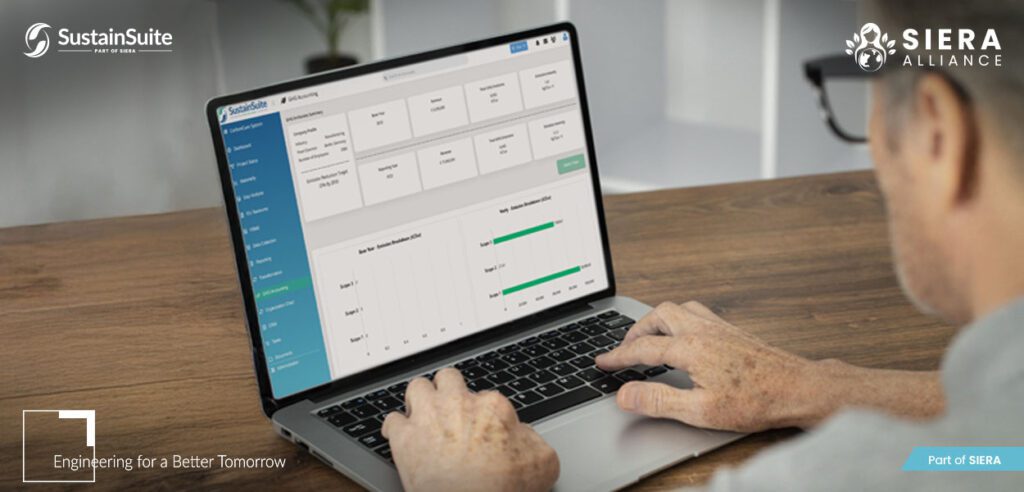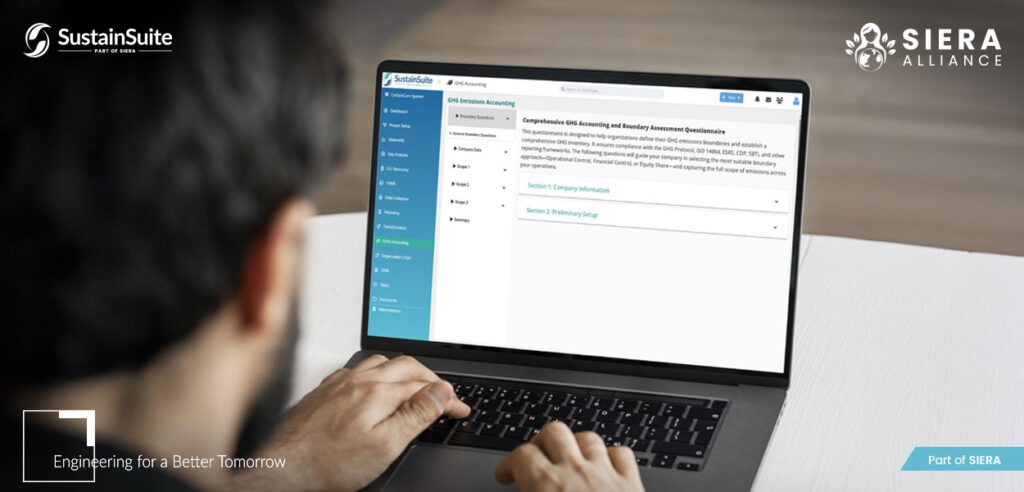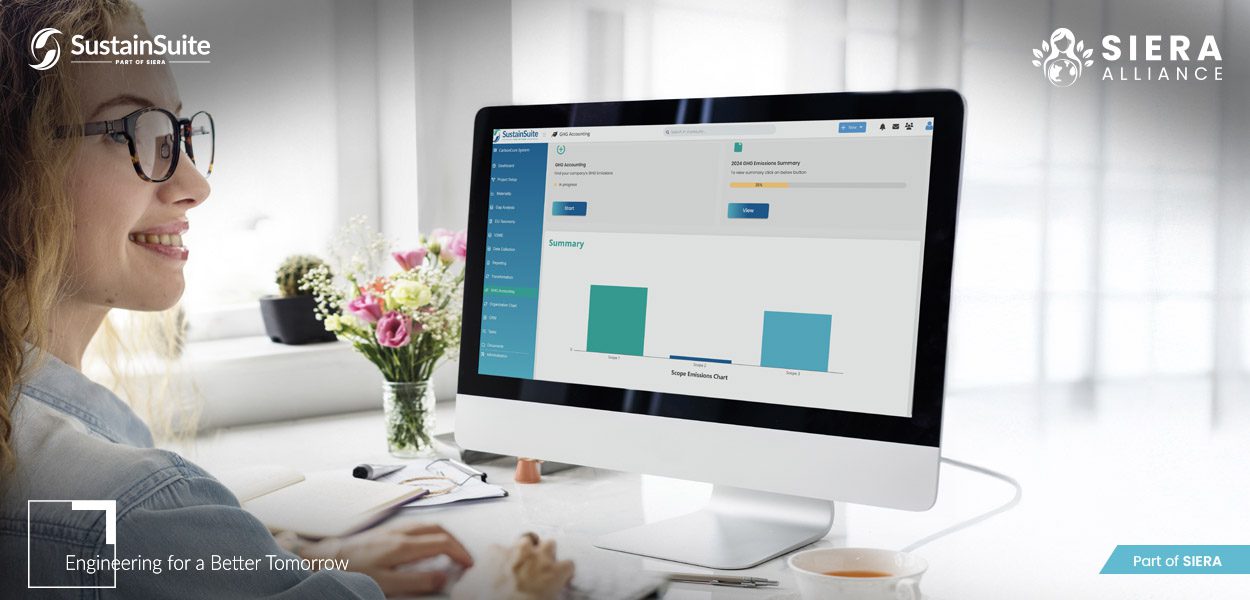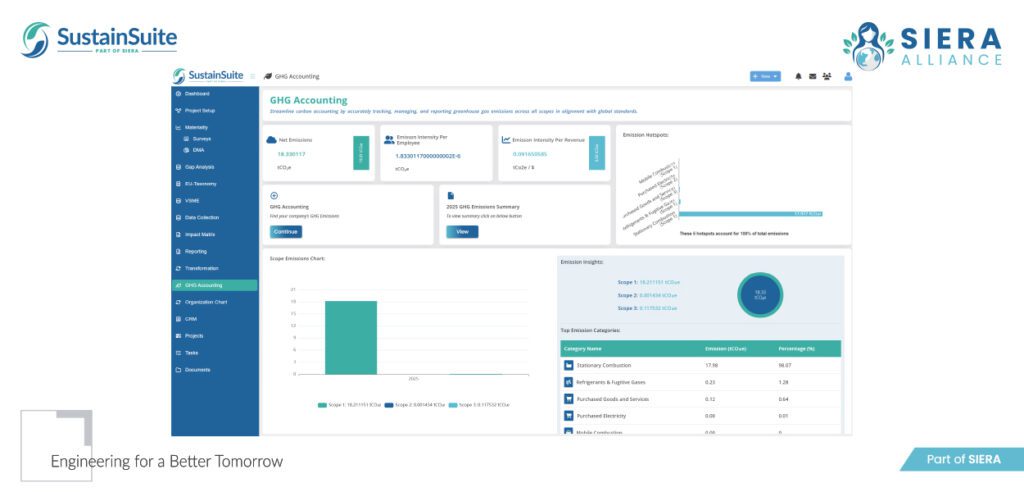Faced with tightening climate regulations and rising environmental demands from stakeholders, businesses are under increasing pressure to display environmental stewardship. Today, among the most trusted and verifiable sources of an organization’s sustainability is greenhouse gas (GHG) reporting.
GHG reporting has become a pillar of business transparency and accountability, helping corporations retain stakeholder trust while also unlocking access to new streams of green financing. In this article we will explore how GHG reporting has evolved from a compliance obligation to a strategic advantage, driving long-term resilience and reputational strength.
What is Greenhouse Gas Reporting?
GHG reporting or greenhouse gas reporting, is the process of quantifying and disclosing emissions caused by business operations. It is typically broken down into three types-
- Scope 1 emissions: Direct emissions from owned or controlled sources (e.g., company vehicles, on-site fuel combustion).
- Scope 2 emissions: Indirect emissions from the generation of purchased electricity, heat or steam.
- Scope 3 emissions: All other indirect emissions across the value chain (e.g., supplier activities, employee commuting, product use).
Governed by frameworks like the Carbon Disclosure Project (CDP) and the GHG Protocol and guided by regulatory mandates such as the European Sustainability Reporting Standards (ESRS), corporate GHG reporting empowers businesses to track their environmental performance, reduce their climate impact and meet the expectations of regulators, investors and customers.
Why is GHG Reporting Crucial in 2025?
In 2025, GHG emissions reporting plays a vital role in shaping how businesses are perceived and financed. Key reasons for its rising importance include:
- Stricter Climate Regulations: Frameworks like CSRD and SEC climate disclosure rules require detailed emissions data.
- Investor Expectations: Investors now use ESG ratings — including GHG transparency — as a benchmark for risk and opportunity.
- Supply Chain Pressures: Multinational businesses are demanding carbon disclosures from suppliers to meet Scope 3 reduction targets.
- Reputation and Brand Value: Consumers increasingly support brands with clear environmental commitments.
In this environment, organizations that lack robust GHG reporting risk falling behind on compliance, capital access and customer trust.
How GHG Reporting Builds Business Trust
Trust is built on transparency. When companies invest in accurate corporate GHG reporting, they send a clear message of accountability, which generates several trust-building effects:
- Credibility with Investors and Stakeholders: Emissions disclosures show that an organization is managing climate risks and opportunities responsibly.
- Regulatory Assurance: Comprehensive reporting assures authorities of the company’s compliance and due diligence.
- Internal Alignment: GHG data enables C-suites and operational teams to work from a shared baseline, fostering collective action on sustainability goals.
- Customer Loyalty: Environmentally conscious consumers are more likely to trust-and buy from-brands with transparent carbon footprints.
In essence, GHG reporting is a tool that aligns business interests with societal expectations, strengthening long-term relationships.

The Role of GHG Reporting In Attracting Green Financing
Green financing — such as green bonds, sustainability-linked loans, and ESG investment funds — is rapidly expanding, but access to these instruments hinges on transparent and credible GHG emissions reporting.
Emissions data plays a crucial role in determining eligibility for green instruments, as many governing bodies require proof of carbon mitigation strategies backed by measurable outcomes. Financial institutions also rely on emissions reporting to evaluate climate risk exposure, particularly for Scope 1 and Scope 3 emissions. Accurate data enhances ESG ratings, which influence investment decisions and perceptions of long-term value.
Moreover, verified reporting supports alignment with science-based targets and net-zero commitments. For instance, companies seeking climate-linked loans often must disclose detailed Scope 1 emissions as part of their KPIs, and those with comprehensive tracking systems are better positioned to secure favorable financing terms.
Key Elements of Effective GHG Reporting
Successful GHG reporting is built on five foundational elements:
- Comprehensive Scope Coverage: Capturing Scope 1, 2 and 3 emissions across all relevant business activities and categories.
- Standardized Methodology: Aligning calculations with globally accepted protocols like the GHG Protocol, ISO 14064 and ESRS.
- Data Accuracy and Consistency: Using verified emission factors, centralized data collection and internal controls.
- Automated and Scalable Tools: Leveraging platforms like SustainSuiteto streamline calculation, reduce manual errors and generate reports.
- Transparent Communication: Publishing clear, comparable and actionable reports for stakeholders and regulators.
Challenges Businesses Face in GHG Reporting
Despite growing interest in corporate GHG reporting, many companies face significant hurdles. Emissions data is often fragmented across departments, making it difficult to consolidate and analyze. Scope 3 reporting adds further complexity, as it requires input from external stakeholders like suppliers and end users — data that is often hard to access.
Compounding these issues are rapidly evolving regulatory frameworks, such as updates to the ESRS or changes in SBTi criteria, which demand ongoing attention. Smaller firms, in particular, may lack the internal expertise or dedicated sustainability staff to manage these demands.
These challenges highlight the urgent need for digital tools that streamline, standardize and scale emissions reporting across the organization.
Best Practices to Strengthen GHG Reporting for Trust and Financing
To overcome reporting barriers and unlock green financing opportunities, businesses should adopt the following best practices:
1. Use a Dedicated GHG Management Tool
Platforms like SustainSuite are purpose-built for emissions tracking. Key benefits include:
- Tracking emissions across Scope 1, 2 and 3 (categories (e.g., energy use, travel, supply chain).
- Automated calculations using predefined emission factors to reduce human error.
- Customizable reporting aligned with CDP, GRI, CSRD and TCFD requirements.
2. Implement Emission Factor Integration
SustainSuite’s database enables users to customize emission factors based on geography and industry. This feature ensures more precise, locally relevant data.
3. Streamline Data Collection
With data import capabilities, SustainSuite simplifies the process of integrating utility bills, travel logs and other emissions data into the system- saving time and boosting accuracy.
4. Generate Tailored Reports
The tools allow sustainability teams to create custom reporting templates for regulatory bodies, investors, or internal stakeholders, making disclosure faster and more adaptable.
5. Monitor Emissions Regularly
Daily or weekly use of GHG tracking tools ensues continuous performance monitoring, allowing teams to adjust strategies in real-time.


Future Trends in GHG Reporting and Green Financing
Looking ahead, several key trends wills shape the landscape of GHG reporting and green financing in 2025 and beyond:
- Mandatory Assurance Requirements: CSRD mandates limited assurance for emissions data. Expect growing demand for verifiable, audit-ready reporting.
- Real-Time Reporting: With IoT and smart meters, emissions tracking will become more dynamic and less reliant on annual cycles.
- AI in Emissions Forecasting: Machine learning will play a growing role in identifying carbon hotspots and optimizing reduction pathways.
- Integration with ESG and Financial Systems: GHG data will be embedded into enterprise reporting tools and linked to balance sheets.
- Sector-Specific Benchmarks: Regulators and investors will expect emission reporting tailored to industry-specific material issues (e.g., cement, logistics, retail).
As these trends unfold, tools like SustainSuite will be instrumental in helping companies stay ahead of regulatory and investor expectations.
Transparent, Auditable Reporting is No Longer Optional
In 2025, GHG reporting is a strategic imperative. Companies that invest in clear, credible and comprehensive emissions reporting are not just avoiding regulatorypenalties; they are building trust with stakeholders and gaining access to green financing opportunities.
With tools like SustainSuite, businesses can automate emissions tracking, align with global standards and generate custom reports for various compliance frameworks. From Scope 1 emissions reporting to full-scope disclosures across the value chain, GHG transparency empowers businesses to lead with confidence.
As green finance accelerates and ESG expectation rise, companies that embrace corporate GHG reporting will not only meet the demands of today but shape the sustainability agenda for tomorrow.
FAQs
1. What are the benefits of GHG reporting?
GHG reporting enhances regulatory compliance, stakeholder trust, operational efficiency and eligibility for green financing. It helps businesses identify carbon hotspots and track progress toward sustainability goals.
2. What are the emerging trends in green finance?
Key trends include ESG-linked loans, climate stress testing, sector-specific impact investing and integrated financial-ESG disclosures. GHG transparency is foundational to all these developments.
3. What are the factors influencing green finance?
Factors include government regulation (e.g., CSRD), investor demand for ESG metrics, climate risk assessment frameworks, public pressure for transparency and corporate commitments to net-zero targets.
4. What is the green finance event 2025?
The Green Finance 2025 is expected to gather policymakers, investors and businesses to advance strategies for sustainable investment and climate-aligned financing. The event focuses on innovation, ESG standards and the mobilization of private capital toward net-zero goals.





